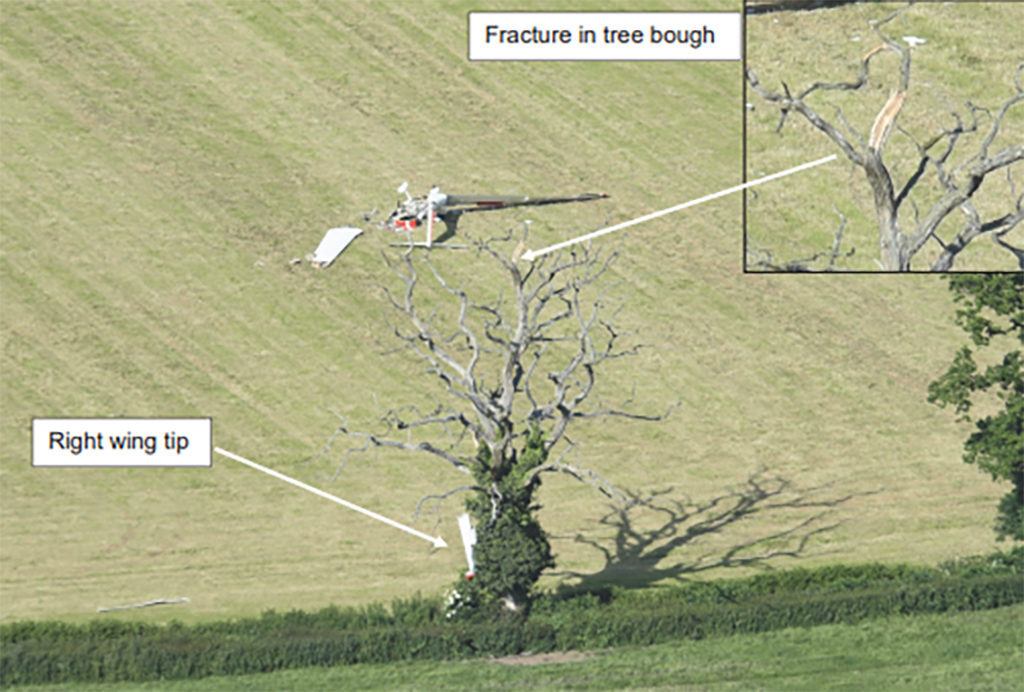The official report into the fatal plane crash of a motor-glider in Monmouthshire last year has concluded that the accident happened because the pilots did not see a tree until it was too late to avoid it.
Grob 109B G-KHEH was carrying out a “Field Landing Excercise” on the 10th June 2018 when it hit a tree in a field near Raglan killing the pilot and the instructor.
The flight took off from Usk Airfield and according to the report “at 0958:24 hrs the aircraft was positioned on the final approach track at an altitude of approximately 674 ft amsl (about 444 ft agl). The recorded aircraft positions do not show any significant deviation in the aircraft track during the last 30 seconds of the recording. During the turn onto the final approach the groundspeed decreased and, shortly after becoming established on the final approach, this had reduced to about 53 kt. During the subsequent final 30 seconds of the flight, vertical and ground speeds are seen to fluctuate with the vertical speed varying between -100 and -2,000 ft/min and the groundspeed varying between 45 kt and 62 kt (Figure 7). In general, when the vertical speed decreased, the groundspeed increased and vice versa. During the last four seconds, recorded data shows the aircraft in a descent with decreasing vertical speed and groundspeed increasing from 45 kt. The last recorded position was at 0958:56 hrs with the aircraft at 284 ft amsl (about 54 ft agl) located approximately 43 m before the tree”
It was initially thought that the aircraft may have suffered engine failure and the report noted that witnesses had heard the aircraft “spluttering” as if it was running out of fuel but the AAIB concluded that the engine was under power when it hit the tree and they could find no evidence of engine failure.
In conclusion, the AAIB said: “It has not been possible to determine conclusively whether the aircraft was suffering from an engine problem, most likely carburettor icing, during the field landing exercise. The engine was however under power at the point it collided with the tree. Irrespective of the presence of an engine problem, had the aircraft not collided with the tree it should have been able to carry out a landing in the field. It was considered that the collision was most likely due to the tree not being seen by the pilots until it was too late to avoid it.”
Just over a month after the accident, the British Gliders Association (BGA) changed its guidelines on field landing exercises.

